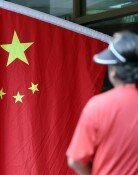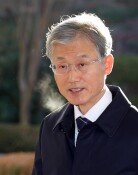[Editorial] What Was the Makeshift Cabinet Shuffling for?
[Editorial] What Was the Makeshift Cabinet Shuffling for?
Posted January. 04, 2005 22:31,
President Roh Moo-hyun reshuffled the Cabinet in six ministries, including replacing the deputy prime minister and minister of Education and Human Resources Development yesterday. However, it is unclear why the reshuffling took place as it is difficult to find a new goal or blueprint for national affairs that usually accompany a reshuffling.
President Roh has stressed many times that things will be different from the new year. Through his state of the union address, he emphasized the importance of livelihoods, the economy, and integration and co-existence. The people are hoping for a new start that will transcend the recent confusion in national affairs. Against this backdrop, it is natural to expect a strong determination for reform in the first Cabinet reshuffling of the year. For example, the governments dedication to the economy should have been proven through the reshuffling.
President Roh said If you work for two years, your ideas and enthusiasm fades, and you fall into mannerism. I believe two years is the appropriate term for a Cabinet member. However, it is difficult to agree that this is a sound reason for reshuffling. An accurate evaluation of the ministers performance should be the standard for reshuffling, not the fact that he has been in his post for long enough. Moreover, regarding the reshuffling, the president commented, I am only planning to make small changes in a makeshift fashion at the end of last year. It is inappropriate for the president himself to express a Cabinet reshuffling as makeshift.
Cabinet reform is not just about seating new people. It should set the future direction for the nation after looking back on the previous management of national affairs. It should also contain a promise to the people that things will be different from now on. However, this reshuffling does not seem to signal any kind of reform, for it did not include core ministries, and except for the fact that two females were appointed, it does not make any noteworthy changes. Thus, criticisms are rising that it was an ambiguous reshuffling with no significant effect.
Furthermore, one cannot understand why the Cheong Wa Dae officials were not replaced, because they cannot escape the blame for the difficulty Korea is facing in national affairs. It is hard to believe that presidential aides were spared their posts as their performances were so excellent or none of them have served for long enough yet.



![[단독]통일교 ‘한학자 보고문건’에 ‘전재수’ 최소 7번 등장](https://dimg.donga.com/c/138/175/90/1/wps/NEWS/IMAGE/2025/12/22/133015670.1.jpg)



